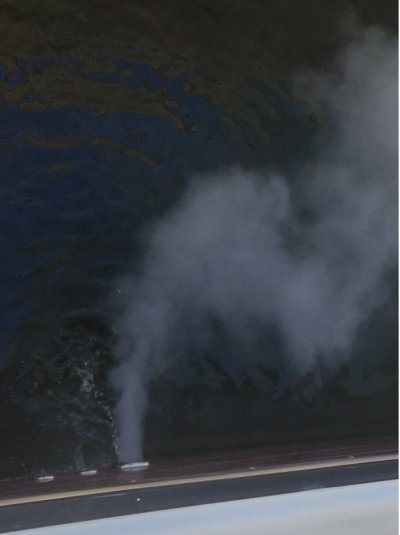Hello,
I have a 2000 Nordic Tug 32 with a Cummins 6BTA engine with 2000 hrs on it. We bought the boat last year and the survey was fine, except the aftercooler needed a service as was leaking (there was sodium in the oil analysis). That has now been fixed.
It runs great, and drives the boat at advertised speed, but we notice clouds of blue smoke on start up, that clear after about 15 minutes, Naturally, being concerned at this sign of oil being burned we have checked out the compression, turbo and exhaust, but all are seem in good shape. We even installed new injectors and a Tony Athen's Envirovent system at the end of the year. Compression recorded was:
1) 315
2) 300
3) 340
4) 340
5) 335
6) 310
Oil filter is clean when inspected and last oil analysis showed all items returning to normal ranges. So, I am wondering what most likely causes are. I would have thought a major problem like stuck rings or cylinder problems would have given more symptoms. I wondered about checking the valve seals/guides next, and if this is a job you can do in situ, or if the head needs to come off for that.
Any thoughts on my predicament gratefully received!
Bill
I have a 2000 Nordic Tug 32 with a Cummins 6BTA engine with 2000 hrs on it. We bought the boat last year and the survey was fine, except the aftercooler needed a service as was leaking (there was sodium in the oil analysis). That has now been fixed.
It runs great, and drives the boat at advertised speed, but we notice clouds of blue smoke on start up, that clear after about 15 minutes, Naturally, being concerned at this sign of oil being burned we have checked out the compression, turbo and exhaust, but all are seem in good shape. We even installed new injectors and a Tony Athen's Envirovent system at the end of the year. Compression recorded was:
1) 315
2) 300
3) 340
4) 340
5) 335
6) 310
Oil filter is clean when inspected and last oil analysis showed all items returning to normal ranges. So, I am wondering what most likely causes are. I would have thought a major problem like stuck rings or cylinder problems would have given more symptoms. I wondered about checking the valve seals/guides next, and if this is a job you can do in situ, or if the head needs to come off for that.
Any thoughts on my predicament gratefully received!
Bill




 (But, we were polite about it.)
(But, we were polite about it.)